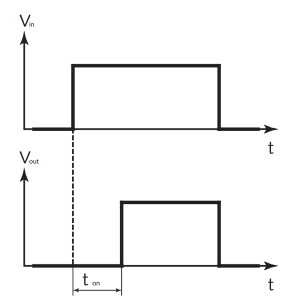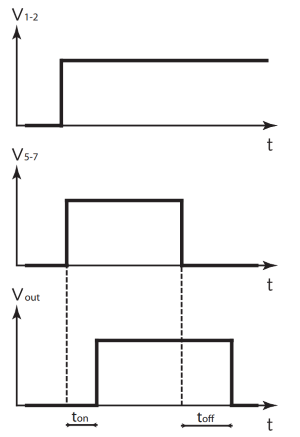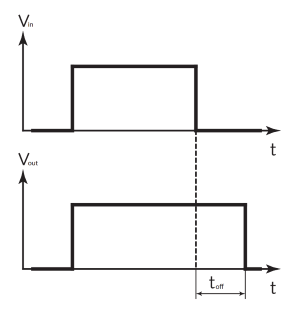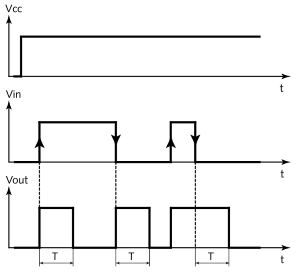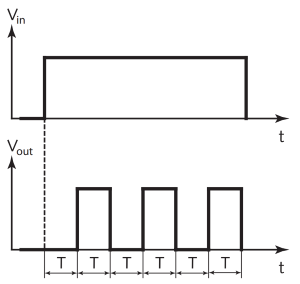Timer Relays
Timer Relays
A Timer Relay is a combination of an electromechanical output relay and a control circuit. The contacts will open or close before or after a pre-selected, timed interval.
Time delay relays are initiated or triggered by one of two methods:
- application of input voltage/auxiliary supply will either initiate the unit or make it ready to initiate when a trigger signal is applied
- applying a trigger signal is used to initiate the unit after input voltage has been applied. This trigger signal can either be a control switch (dry contact switch) or a power trigger (voltage).
Available Timer Relay Types:
Delay-on
When the relay is activated there is a delay on pull-in. |
One-Shot (falling edge)
Upon application of input voltage, the time delay relay is ready to accept a trigger. When the trigger is applied, the output remains de-energized. Upon removal of the trigger, the output is energized and the time delay (t) begins. At the end of the time delay (t), the output is de-energized. |
Delay-on & Delay-off
The relay needs an auxiliary supply and can be activated with an external N/O contact or with a DC voltage. When the relay is activated there is a delay on pull-in. When the relay is not energized anymore there is a delay on drop-out |
||
Delay-off
When the relay is not energized anymore there is a delay on drop-out, without any auxiliary power supply. |
Two-Shots (rising edge & falling edge
Upon application of input voltage, the relay is ready to accept trigger signal. Upon application of the trigger signal (rising edge), the relay contacts transfer and the preset time T begins. During time-out, the trigger signal is ignored. The relay resets by applying the trigger switch (falling edge) when the relay is not energized. |
Flashing
Upon application of input voltage, the time delay begins (T). At the end of the time delay, the output is energized and remains in that condition for the same time delay (T). At the end of this time delay, the output is de-energized and remains in that condition for the time delay T. At the end of the time delay , the output is energized and the sequence repeats until input voltage is removed. |

